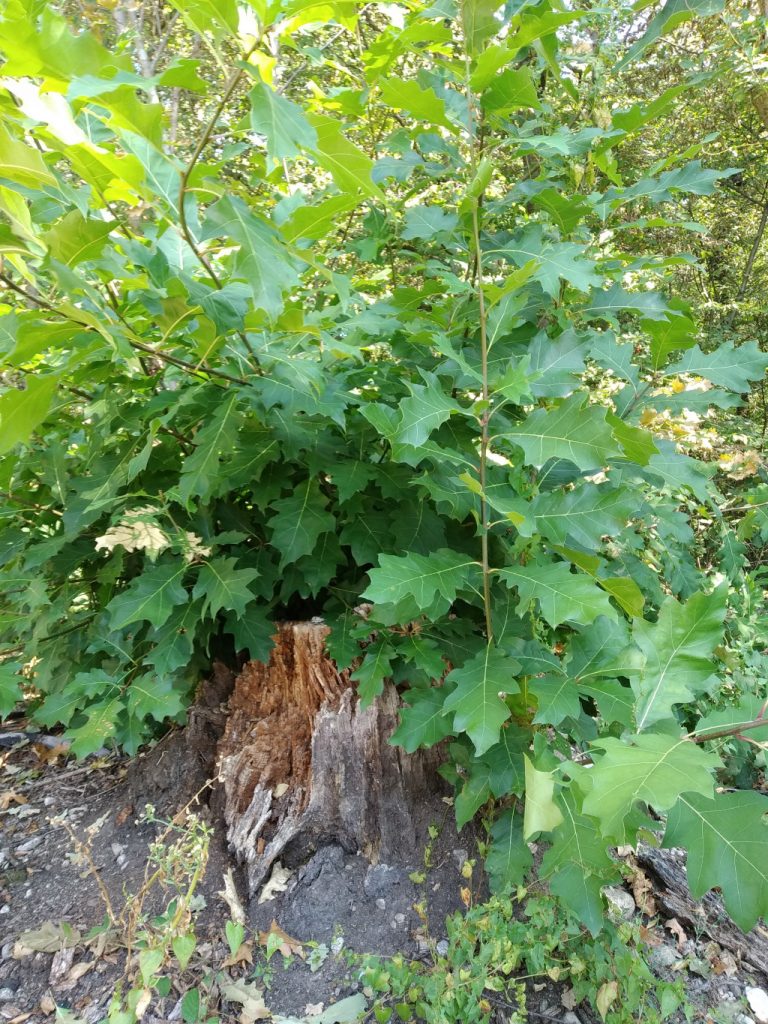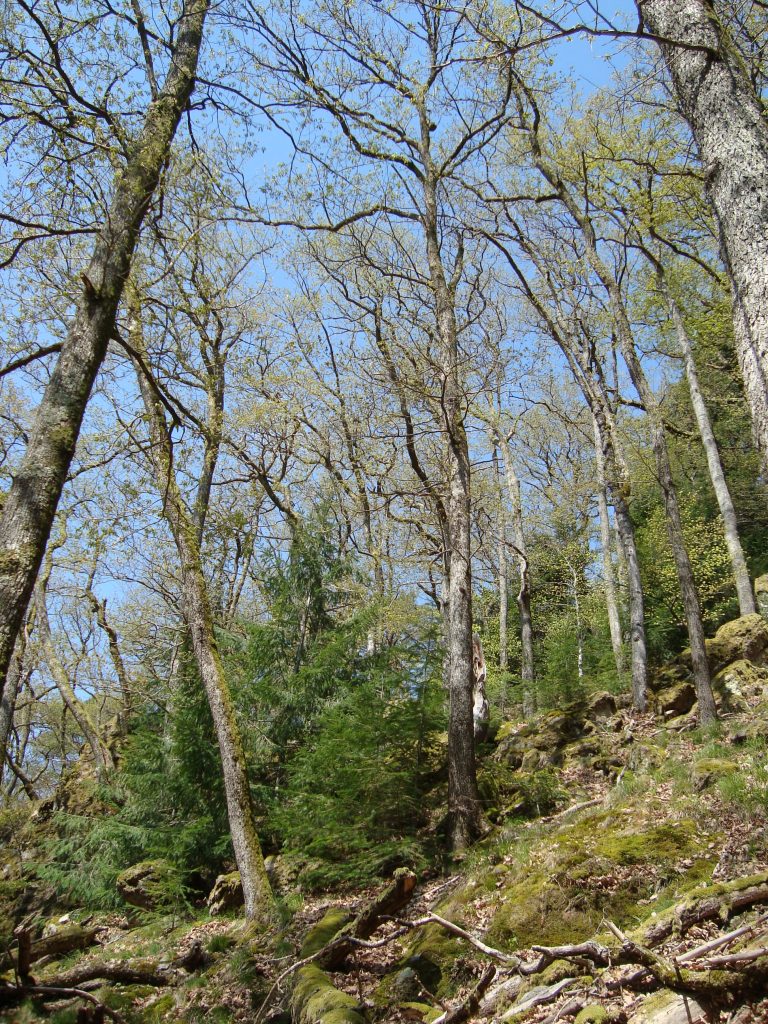Tree species characteristics
For assessing the invasiveness of NNT, tree-specific characteristics that influence their spreading and establishment potential have to be taken into account. These characteristics are also one of the factors used to decide whether population control of NNT is feasible or not.

- Reproduction potential
High reproductive potential of NNT is characterized by early and vigorous generative reproduction (flowering and fruiting at a young age, a high number of seeds), the ability to regenerate vegetatively through root suckers or basal shoots (Figure 1), and the ability of seedlings to overcome competition with other trees and form a sustainable young stand at the site. Reproductive strategies of non-native species are therefore commonly employed for risk assessment since they are known to influence plant establishment capacity.
- Spreading potential
NNT with a high dispersal potential, have the ability to colonize ecosystems quickly and over a large area. Their reproductive potential, dispersal strategies, site requirements, and juvenile growth all contribute to NNT spreading potential. Tree species with light seeds benefit the most from wind dispersal, while tree species with heavy seeds rely on vectors such as mammals, birds or insects.
Princess tree (Paulownia tomentosa Thunb. ex Murray), for example, can establish itself on open sites by a single introduction, forming colonies of productive root sprouts. Other NNT like North American green ash (Fraxinus pennsylvanica Marsh.) or red oak (Quercus rubra L.) are able to regenerate from the tree stump after felling (Figure 1) which can make it difficult to control or eradicate populations.
Sensitivity of Ecosystems

NNT that pose the risk of becoming invasive are usually not problematic everywhere in the introduced range. NNT are successful in ecosystems where they find suitable site conditions and have a competitive advantage over native tree species. This is problematic if ecosystems have a high conservation value and the species communities may be altered by the NNT. These ecosystems are considered particularly ‘sensitive’ to NNT. Ecosystem sensitivity to NNT invasion is influenced by site-specific characteristics, such as soil and climate, as well as the local vegetation and fauna, or the cultivation or management techniques.
For example, the spread and establishment of Douglas-fir in semi-natural, open oak woodlands or treeless rocky outcrops can have potentially negative impacts, while it poses much less or no risk in closed forests (Figure 2). Another example is the black locust (Robinia pseudoacacia L.), which can have substantial negative impacts in open grasslands or open riparian forest, while posing much less or no risk in closed forests. Silvicultural measures influence tree species compositions and thus can be used to actively control tree species so that the establishment success of certain NNT can be promoted or suppressed indirectly, depending on the management objective. Also, browsing of seedlings by high game populations, for example, may prevent successful establishment of a NNT, or may give the NNT an advantage if native species seedlings are preferred over the NNT. For example, establishment of red oak may fail to high levels of game browsing and competition from native beech natural regeneration.

